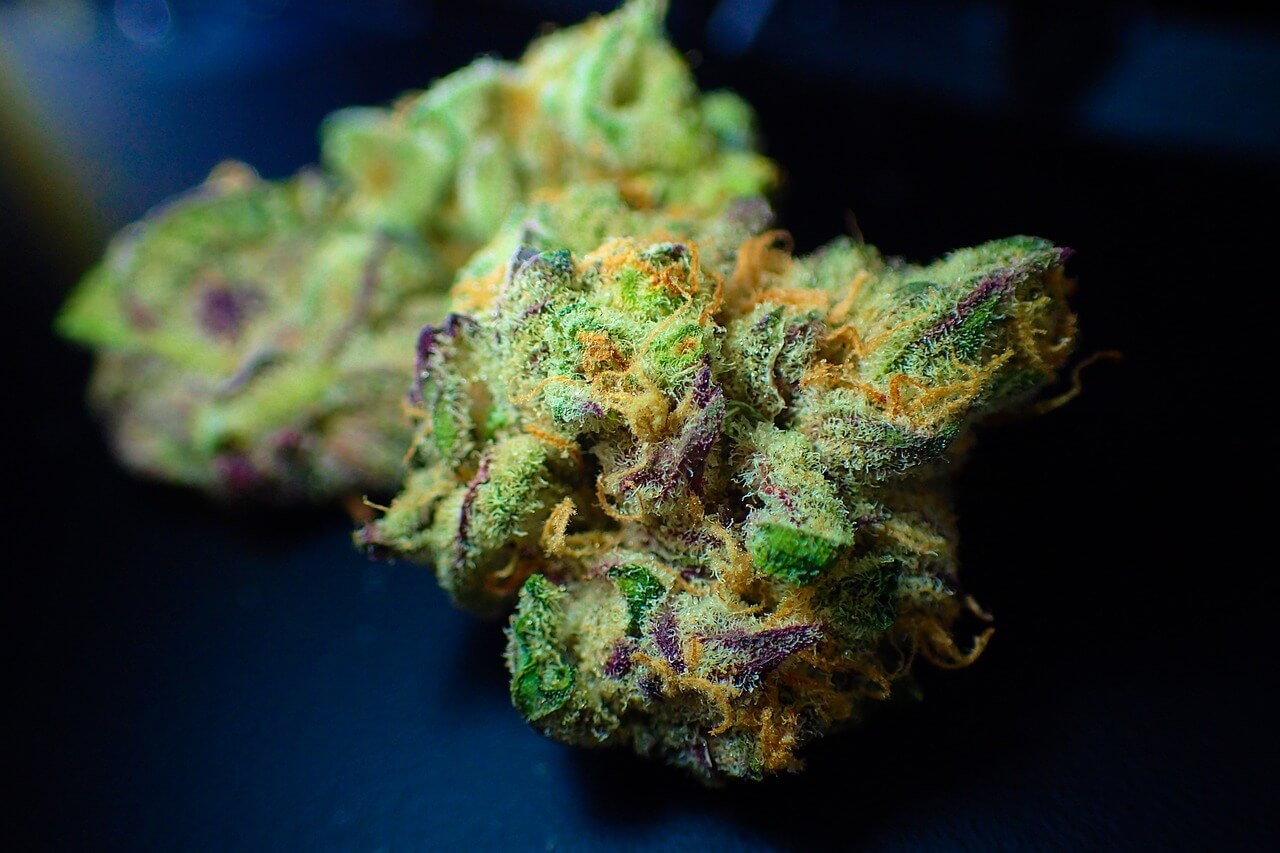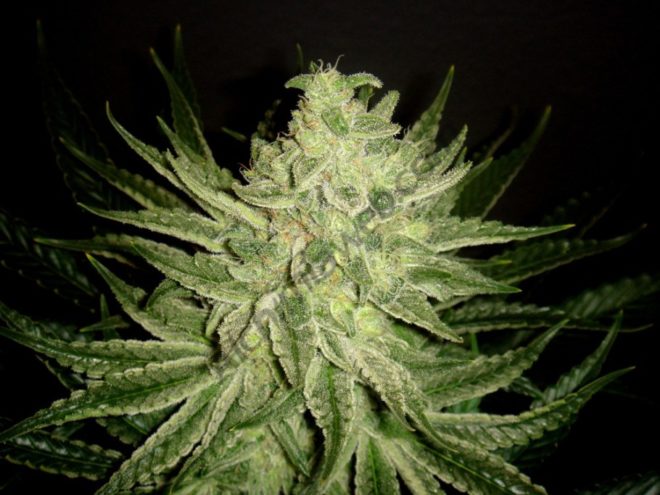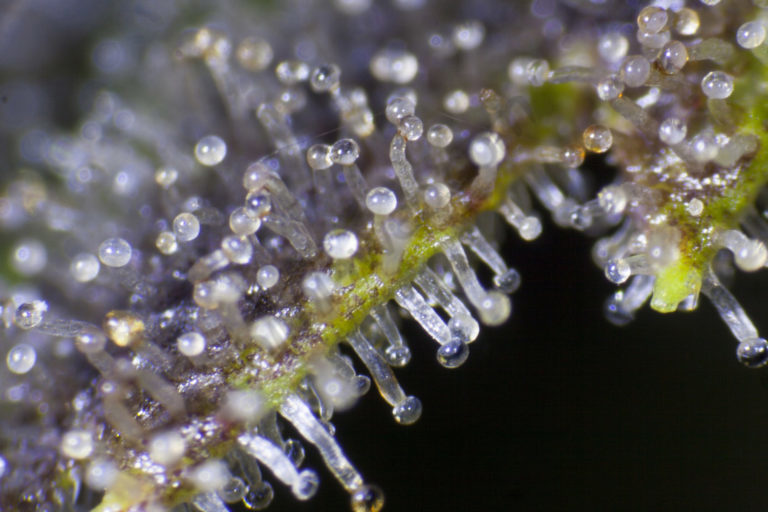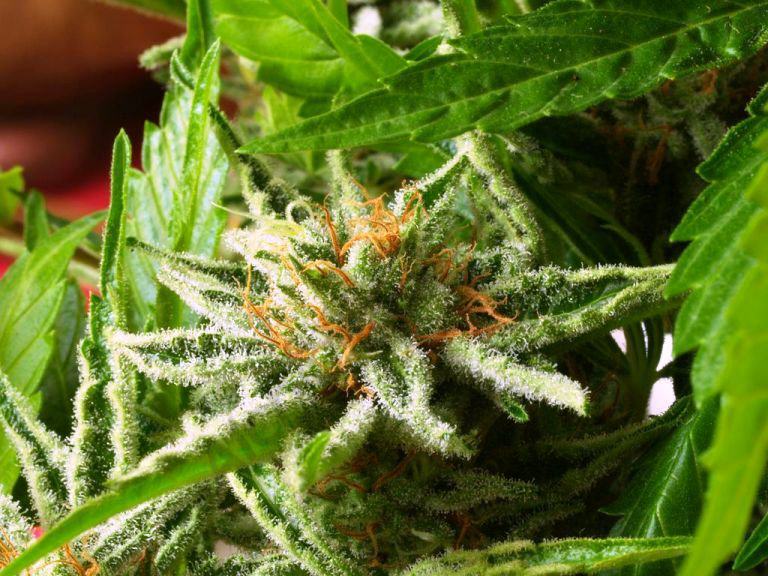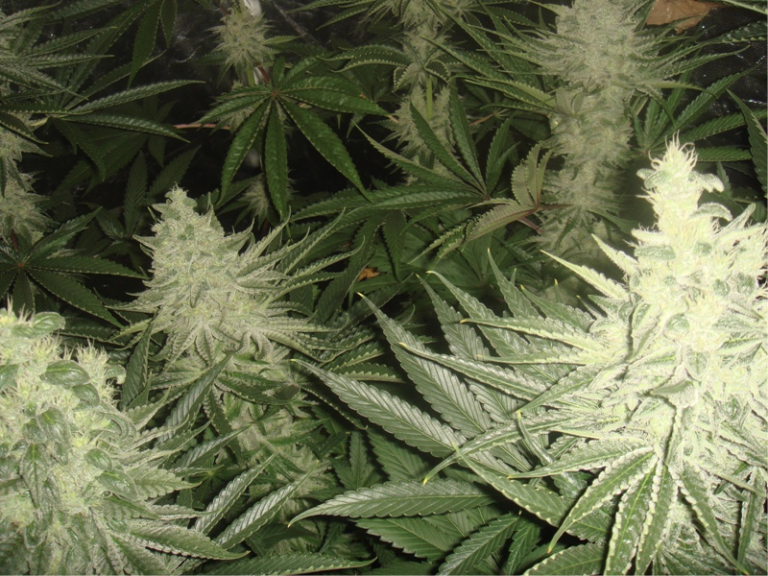How to increase the THC level of cannabis plants
List of contents
Whether we are talking from a medical or recreational cannabis context, the cannabinoid content becomes more important with each passing season. From users who only want to consume flowers or products rich in CBD but without THC, to the most fanatical fans of strains with high THC content (and, therefore, highly psychoactive/medicinal), as time goes by consumers are gaining experience and are increasingly demanding in terms of knowing the amount of cannabinoids in the seeds or flowers they buy.
Without a doubt, one of the most demanded cannabinoids today is THC. Logically, for a company that markets products with THC or isolated THC, it will be much better to start with plant matter that is very rich in this compound, so varieties that already have a high THC content will be chosen. But how can the total THC production in a cannabis crop be increased? What can be done to increase the THC production of a plant? Today we will tell you about several key aspects to take into account to get as much of this cannabinoid as possible.
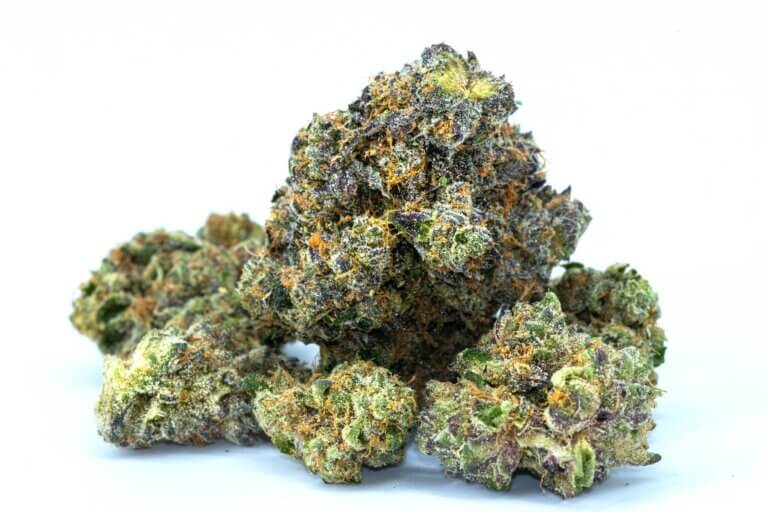
Choice of genetics to grow
The first step to getting as much THC as possible is, of course, starting with seeds of varieties with a high THC content. Yes, it is true that in this article we will see how to get more THC from a cannabis plant, from anyone, but the fundamental thing if you want to obtain high levels of this substance will be a careful choice of the genetics that you are going to cultivate. Mainly because today you can find varieties with THC percentages close to 30%, something that would have been incredible just a few years ago.
If you are a professional, apart from the production in grams of THC per square meter of cultivation, you should also look at other important aspects to get the most out of your installation, such as flowering speed, resistance to pests, or nutritional needs. In the event that you are a home grower, paying attention to these traits is also interesting, although we recommend that you give more importance to aspects such as the aroma or taste of the flowers. And, in case you already have some seeds of a variety that you want to grow and you are simply looking to get the maximum THC production that this genetic can give you, keep reading...
Top 10 highest-THC cannabis strains of 2022
The principal cannabinoid in cannabis, THC, is largely responsible for the effects produced by cannabis and is therefore an important criterion for many growers when choosing a strain. In this post, we will focus on the most potent cannabis varieties of 2022.
Overall plant health
If what you want is for your plants to offer everything they are capable of offering, you cannot forget any detail. Now that you are clear about the genetics you are going to grow, you need to refine each parameter of your grow to avoid any source of stress to your plants that could cause a problem in their development. It will be useless to have the best lamps, air conditioning equipment or CO2 generators if your plants are going to suffer from nutrient deficiencies or are going to be watered excessively, for example.
You are going to try to get your plants to their full potential, much like an athlete during the Olympics...you have to give them everything they need to do it, or else it will be impossible! Keep a close eye on the temperature and humidity of the crop, the type of light you are going to use, the nutrition, the state of the roots, the pH, EC, and temperature of the irrigation water... everything will help your plants become true champions!
Temperature and humidity
These two factors are always of crucial importance for a crop to turn out as it should. As you already know from our article on temperature and humidity in cannabis cultivation, where we talk about the vapor pressure deficit and the relationship between these two values, adjusting them properly becomes the difference between success and failure. Consult the tables attached to that article to be sure which humidity value corresponds to each temperature value.
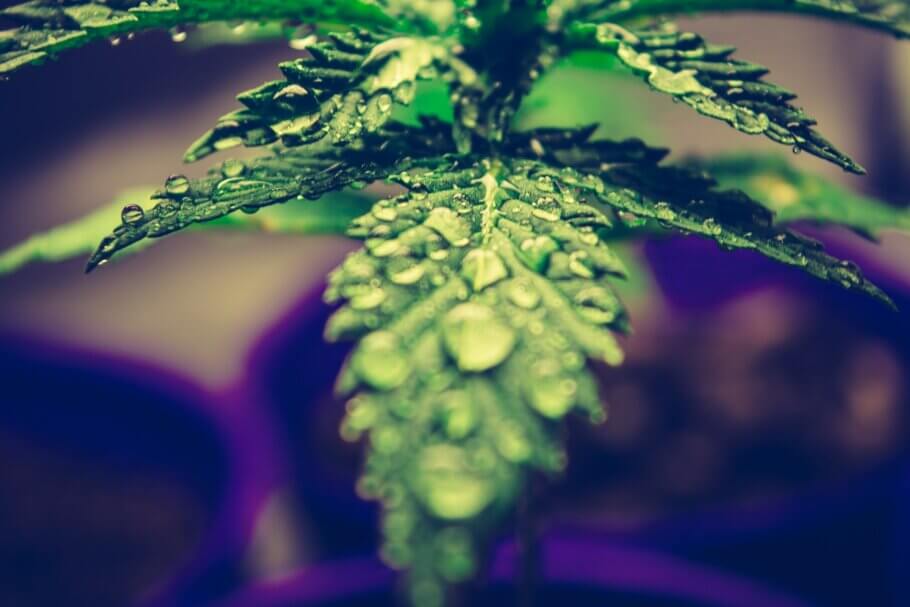
In the case of THC, our biggest enemy in cultivation will be high temperatures. In fact, unless we are using a CO2 generator, temperatures of 30ºC or higher will only facilitate greater evaporation of terpenes and less production of cannabinoids, so they should be avoided. If what you want is for your plant to reach its THC peak while preserving its organoleptic qualities to the maximum, the temperatures inside your grow room or tent should not exceed 25ºC.
During the final phase of flowering, you can try lowering the humidity a bit compared to the value that would correspond to it in the table; many varieties respond to lower humidity with increased resin and cannabinoid production, which works in both ambient (relative humidity) and irrigation (substrate moisture). Of course, it is not about torturing the plants until they are almost killed, but simply reducing the relative humidity in the environment a little and the frequency or amount of irrigation.
Lightning
Choosing a good grow light kit is extremely important if you want to achieve the maximum potential in terms of the amount of THC produced by your plants. For this, the classic HPS or high pressure sodium equipment can work correctly, although in recent years professionals have opted for CMH or ceramic halide lamps or, directly, full-spectrum LED lamps. This last aspect is important, because as we will see in the next point, the broader the spectrum of light that plants receive, the more cannabinoids they will produce.
In many cases, about 600W per square meter of cultivation is being used, enough for the plants to express their maximum potential if the rest of the crop parameters are correctly optimized. In the case of using LEDs, you can opt for a little less power, although many modern LED equipment designed for 1.2 x 1.2 meters is 600W (dimmable in the vast majority of cases). Of course, and in case you want to save on the electricity bill, dimmable electronic ballasts can also be used with discharge lamps such as HPS or CMH.
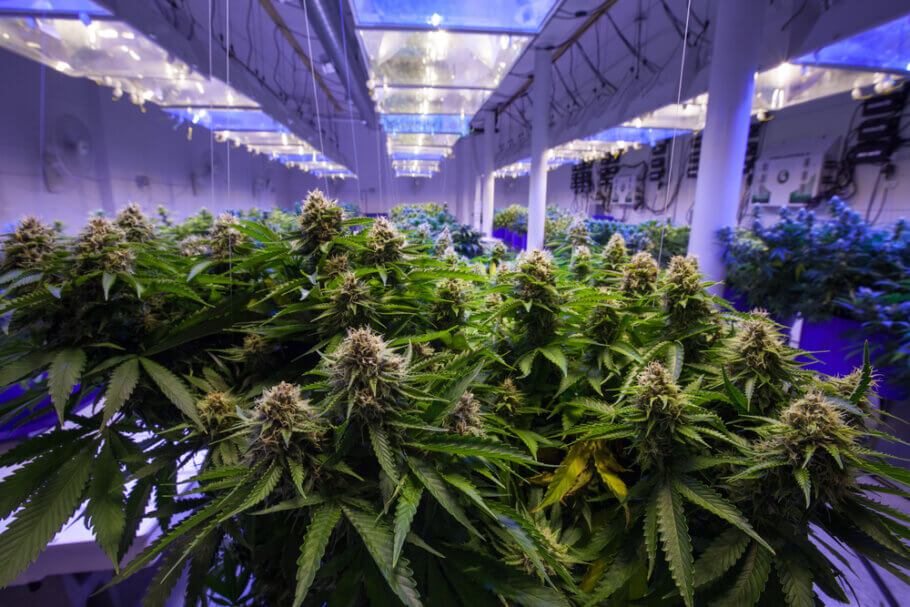
UV rays
The use of UV lamps in indoor cultivation has become more and more widespread as more and more evidence (mostly testimonials) seems to show that it increases both the production of glandular trichomes and the total THC content in them. There are not a few scholars who believe that the main reason why the cannabis plant produces trichomes (and, in them, hundreds of substances such as cannabinoids, terpenes, or flavonoids) is to protect itself from exposure to sunlight, more specifically as a method of defense against ultraviolet rays; Thus, it could be thought (and this is actually the case) that if exposure to UV rays is increased, the plant's response will be greater, producing more resin and more THC.
In a study, a curious experiment was carried out: some plants were exposed to UV rays, while others were caused a plague of insects. Another of the theories about why the plant produces THC is to protect itself against insects, so in this study both theories were investigated and compared. The result was overwhelming: the plants with pests did not show any increase in THC production (if anything the opposite), while those exposed to UV rays did increase the production of both resin and THC.
However, be careful with this topic: for the writing of this article, for example, we have found 3 studies on the increase in the amount of THC and the performance of plants with conflicting conclusions. In one of them, an increase in the yield of the plants (dry weight of the flowers) was observed, but not in the cannabinoid content. In another, it is said that it does not work in either of the two cases, while in the third an increase in THC was observed in narcotic cannabis plants, although this was not the case in hemp plants. Without a doubt, we need more data to be able to reach a conclusion, and also the chances that some of these studies are not entirely reliable are, in fact, quite high; not in vain, we doubt that Nature is rolling dice!
There is controversy about the increase in THC or yield with the use of UV: while some studies support this theory, others strongly deny it.
In any case, prudence: if you decide to try UV light in your room or grow tent, keep in mind that it is a light that can cause skin cancer and serious damage to the eyes, so schedule everything so that the UV lights are never on if you are visiting the grow.
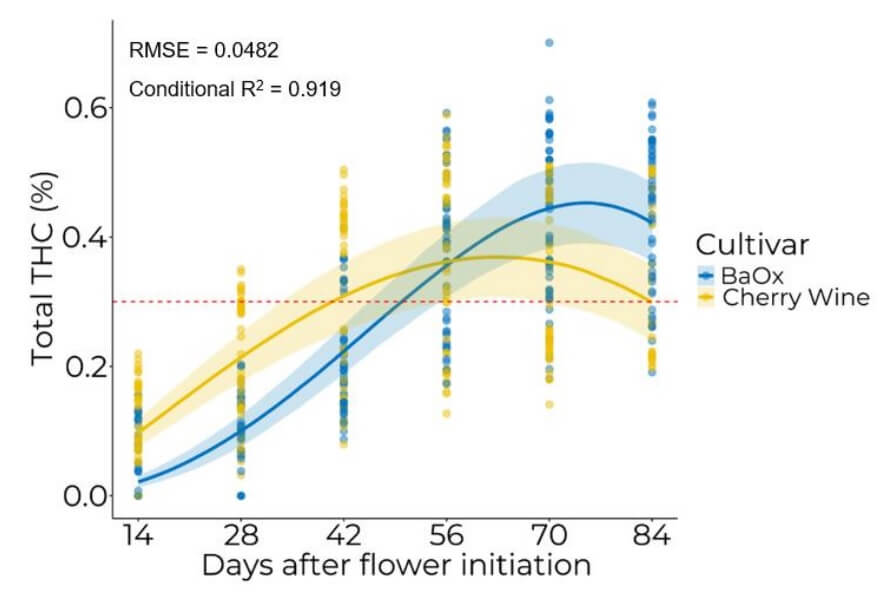
Optimum harvest point
As you probably already know, the substances secreted inside the trichomes are produced and stored during flowering. Thus, as flowering progresses, the amount of cannabinoids, terpenes, and the rest of the compounds present in the trichomes increases, reaching its peak at the moment known as plant maturity. Growers, therefore, tend to be very vigilant during this period and monitor the state and color of the trichomes on a daily basis in order to establish the best time to harvest, precisely when the THC peak (we should say THCA) has been reached and before it starts deteriorating.
Indeed, the THC content of a plant increases during flowering up to a certain point, from which point the THC begins to degrade and, therefore, the amount of total THC begins to decrease. Many growers will wait for most of the glandular heads of the trichomes to be milky in color before harvesting, as it is during this phase that the peak THC content within the heads is reached. In our article on how to harvest based on trichomes, we tell you everything in more detail.
Here is our summary of techniques that you can use to try to increase the production of THC by your plants, we will be very attentive to the comments section in case you decide to share your tricks or ask your questions.
Happy harvest!
---------------------------
References:
- Postharvest Operations of Cannabis and Their Effect on Cannabinoid Content: A Review. Pabitra Chandra Das , Alec Roger Vista, Lope G. Tabil, Oon-Doo Baik
- The Effect of Harvest Date on Temporal Cannabinoid and Biomass Production in the Floral Hemp (Cannabis sativa L.) Cultivars BaOx and Cherry Wine. Eric R. Linder, Sierra Young, Xu Li, Shannon Henriquez Inoa, David H Suchoff
- Cannabis Inflorescence Yield and Cannabinoid Concentration Are Not Improved with Long-Term Exposure to Short-Wavelength Ultraviolet-B Radiation. Victoria Rodriguez-Morrison, David Llewellyn, Youbin Zheng
- Cannabis Yield Increased Proportionally With Light Intensity, but Additional Ultraviolet Radiation Did Not Affect Yield or Cannabinoid Content. David Llewellyn, Scott Golem, Elizabeth Foley, Steve Dinka
- UV-B radiation effects on photosynthesis, growth and cannabinoid production of two Cannabis sativa chemotypes. J. Lydon, A. H. Teramura, C. B. Coffman

















































